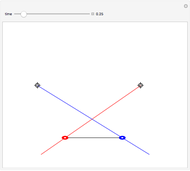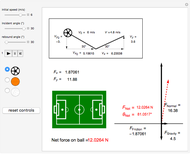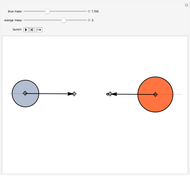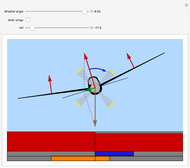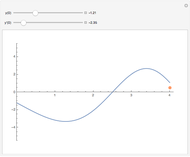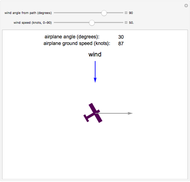Airplanes and Crosswinds

Requires a Wolfram Notebook System
Interact on desktop, mobile and cloud with the free Wolfram Player or other Wolfram Language products.
Airplanes fly in the atmosphere, so the direction and speed an airplane has in the air might not be the path and speed that appear on the ground. This Demonstration illustrates the effects that winds can have on an airplane's path relative to the ground. Calculating corrections for heading and ground speed are part of a pilot's planning for cross-country flights. Knots are the standard unit of speed for aviation in the United States; 100 knots = 115 mph = 185 km/hr.
Contributed by: Bruce Miller (March 2011)
Open content licensed under CC BY-NC-SA
Snapshots
Details
Snapshot 1: A wind perpendicular to the desired path is still a headwind, because some of the airplane's air speed must be used to cancel the sideways push. Hence the proverb, "Most winds are headwinds".
Snapshot 2: This crosswind has the same speed as the wind in Snapshot 1, but it is partly from the rear and provides enough forward push to make up for the use of air speed into the perpendicular component.
Permanent Citation
"Airplanes and Crosswinds"
http://demonstrations.wolfram.com/AirplanesAndCrosswinds/
Wolfram Demonstrations Project
Published: March 7 2011







